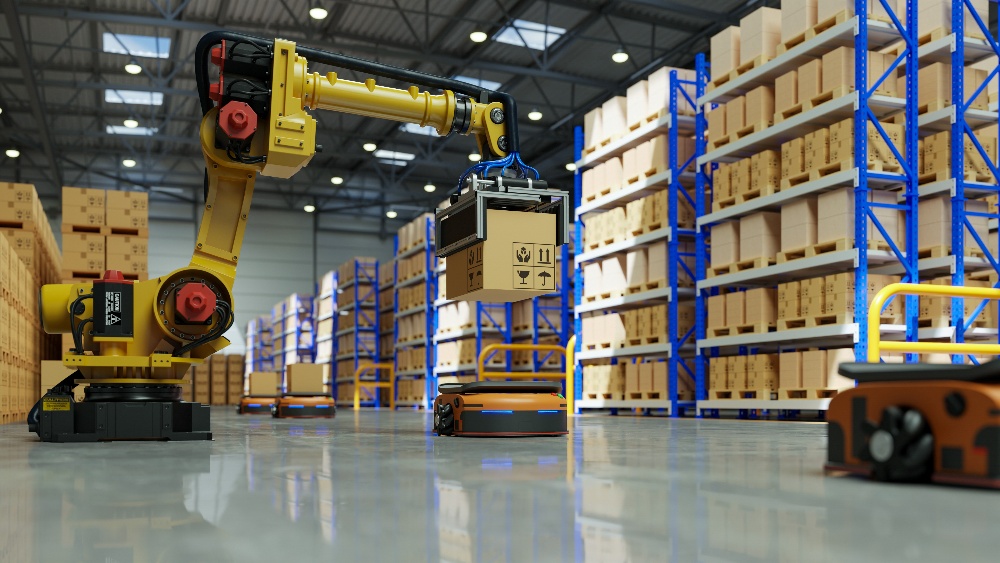Could you keep up with a sudden boost in warehouse productivity?
One third-party logistics provider recently experienced a 500% surge in efficiency and order accuracy after implementing collaborative robots in its fulfillment center.
The automation system, adept at processing thousands of orders daily, particularly excelled during peak periods, like Black Friday, where a robot managed up to 4,400 orders in one day with just a small crew for replenishment.
While this is one particularly successful example, robots – and the smart use of data – are poised to revolutionize logistics businesses across the supply chain, from incoming loads to outbound logistics.
The pace of their adoption in logistics operations is expected to grow by 20% a year over the next few years.
This stands to reason as labor shortages continue to plague logistics businesses, creating operations challenges that these collaborative robots and other automation are uniquely designed to solve.
The benefits include increased productivity, less demand for human labor, more accurate inventory control and order picking, the ability to operate 24/7 in a lights-out environment, which can speed up fulfillment, help meet carbon emissions reduction targets and reduce energy costs.
As more and more companies come to recognize the advantages that this automation offers, and adoption increases, warehouse throughput and productivity will continue to soar.
That adds pressure on any organization working trying to hold onto market share against an automated competitor, and it also means expectations of both customers and suppliers will be climbing. Automation sets the bar higher in terms of accuracy and speed of order fulfillment.
But physical automation is just part of the picture.
Sure, collaborative robots, automated storage and retrieval systems (AS/RS), goods-to-person robots and even automated guided vehicles probably the most recognizable in the world of supply chain robots, but they are not alone.

Digitizing manual processes
They are supported by a vast world of automation that looks after the background processes that allow the physical activities or warehousing and order fulfillment to happen.
It’s here that you can gain a real digital advantage without having to overhaul warehouses with physical automated equipment.
Take a look at your yard, for example. Do you know where every trailer is and what’s in it?
Or is there some amount of guesswork when it’s time for a specific load that’s being held outside to be brought indoors to replenish stock?
Do your shunt drivers waste a lot of time searching for a box?
Do you keep delivery drivers waiting while you find a spot for a trailer?
You may be managing this with a spreadsheet, magnets on a whiteboard or pushpins in a map, but there is a much better way.
When you automate your yard using cloud-based C3 Yard, you will know exactly where every trailer is and what’s in it, how long it’s been there.
You’ll be able to send a driver to get it automatically, without need for radios, phone calls or wasted time searching.
C3 Yard takes the slow, manual process of managing a yard and turns it into efficient automation.
When the competition and the pace of commerce are constantly speeding up, you’ll be able to keep up by taking advantage of the technological edge provided by automated yard management.
These systems take technologies like GPS and Internet-of-Things (IOT) tracking to deliver visibility into where assets are in real time.
And they integrate that information with algorithms that operate in the cloud and on mobile devices to keep the information at hand no matter where you are.



